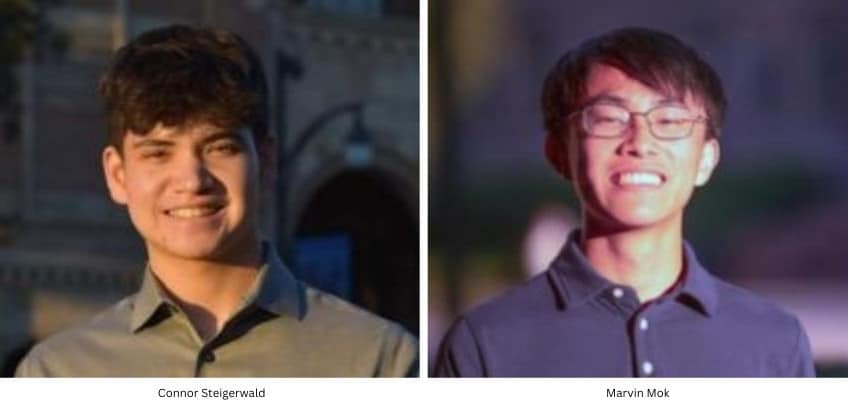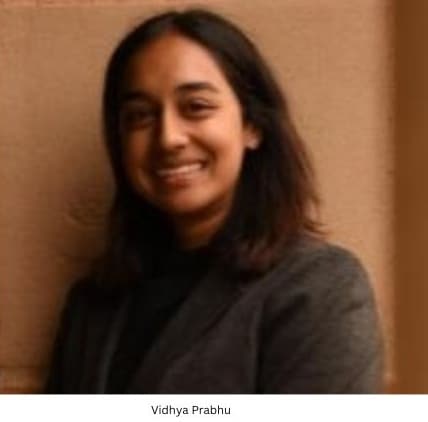By Christina Clark
Over the summer of 2023, the University of California, Los Angeles (UCLA) hosted three SpectrumX-sponsored students in its National Science Foundation (NSF) research experience for undergraduate (REU) program. These students were paired with graduate students to pursue research in the electrical and computer engineering field and were guided through the process researchers take from project formation to presentation throughout the 10-week program.
Through UCLA’s Fast Track to Success program, the Summer Undergraduate Research Program (SURP), SpectrumX project team lead, and professor of electrical and computer engineering at UCLA, Danijela Cabric, led three undergraduate students through the summer experience. Students in the Fast Track to Success program are recruited as incoming undergraduate students, and they are provided with a supportive environment and opportunities to challenge themselves in areas where they hope to launch future careers. SURP is a part of the UCLA Henry Samueli School of Engineering and Applied Science that coordinates several research-focused programs for students participating in an REU supplement program.
“Being able to work with a center like SpectrumX that operates at a national level is a great opportunity for students in these programs,” said Cabric. “Students and academic researchers all need to know that there is something bigger to the work we are doing.”

The three SpectrumX-sponsored students included:
- Connor Steigerwald, first year student in electrical and computer engineering. Steigerwald’s daily lab advisor was Enes Krijestorac.
- Research title: “Co-Secondary Spectrum Sharing in 6 GHz Band with Spatial Prediction.”
- From Steigerwald’s abstract:
“In wireless communications, the 6 GHz frequency band has recently opened for unlicensed secondary users, facilitated by WiFi 6 and cellular 5G technologies. Previously, the 5 GHz band employed listen-before-talk (LBT) to ensure fair channel charing. LBT entails devices checking for ongoing transmissions before initiating their own data transfer. This study aimed to elevate LBT communication using deep-learning-based radio localization and channel gain spatial prediction.”
- Marvin Mok, first year student in electrical and computer engineering. Mok’s daily lab advisor was 2022 SpectrumX REU program alumni Tianyi Zhao.
- Research title: “Identification of Bluetooth Devices via RF Finger-Printing.”
- From Mok’s abstract:
“Radio frequency fingerprinting (RFF) is a physical layer identification technique that can be used for various purposes such as security and device tracking. Due to imperfections in hardware, each device will have its own distinctive ‘fingerprint’ when transmitting signals. Using machine learning models such as support vector machines or convolutional neural networks, individual devices can be identified via their own fingerprints. Bluetooth signals are of interest to fingerprint.”
- Vidhya Prabhu, second year student in electrical and computer engineering. Prabhu’s daily lab advisor was Shamik Sarkar. Prabhu has continued to work in Cabric’s lab since completing her 2022 summer REU program.
- Research title: “Proactive Signal Strength using 2D Deep learning Model”

From Prabhu’s abstract:
“An essential tool to furthering dynamic spectrum sharing, which allocated spectrum based on user demand, is knowing the signal strength on particular frequencies and at locations, allowing optimized base station placement for efficient use of the spectrum between many devices in an area. Given the location of existing fixed transmitters and the locations and signal strength of their respective receivers, our goal is to find the signal strength at any point in an area of interest due to a transmitter at any location, but without any active transmission from the transmitter.”
At the SpectrumX Fall Center Meeting, Cabric discussed the programs that UCLA hosted,which she led as a faculty member and SpectrumX mentor. Cabric outlined the goals she has been working to fulfill for the students involved in the REU, which include: giving students the opportunity to conduct research in a cutting-edge field, help students discover pathways to graduate school, acquire skills that translate to the current and future spectrum industry, learn how to perform meaningful and impactful work in their community as an engineer, and pursue the academic research challenge of discovery.
Read more about the student’s research here: SURP 2022 Research Journal and 2023 SURP Research Journal.
Learn more about Undergraduate Opportunities with SpectrumX.
–
About SpectrumX
SpectrumX is funded by the National Science Foundation (NSF) as part of its Spectrum Innovation Initiative, under grant number AST 21-32700. SpectrumX is the world’s largest academic hub where all radio spectrum stakeholders can innovate, collaborate, and contribute to maximizing social welfare of this precious resource.
To learn more about SpectrumX, please visit spectrumx.org.
Contact:
Christina Clark, Research Communications Specialist
SpectrumX / Notre Dame Research / University of Notre Dame
cclark26@nd.edu / 574.631.2665
spectrumx.org
